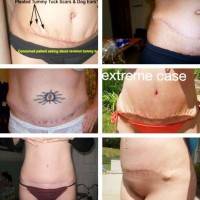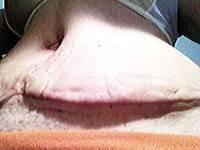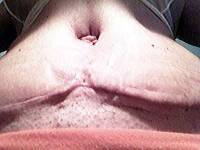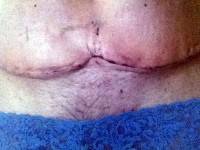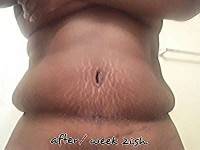Dog Ears After Tummy Tuck
After a Tummy tuck or lipo you can get corrective surgery to loose the dog ears and fix any other slight imperfections that might have been caused by the procedure.
Dog ears should not be part of the prosedure results but nontheless can happen. (Jonathan Fisher, MD, Miami Plastic Surgeon)
Dog ears are caused because the length of the two incisions are unequal causing a bulge on one or both ends of the incision.
This issue can be remedied with a scar revision in which the incision is extended to give a flatter appearance. (Howard N. Robinson, MD, Miami Plastic Surgeon)
Dog ears can occur after tummy tuck surgery or with continued postoperative weight gain. Most procedures can be performed under local anesthesia in a clinic setting by surgically removing the dog ears. (Raffy Karamanoukian, MD, FACS, Los Angeles Plastic Surgeon)
The removal of dog ears can be completed with
- liposuctioning alone
- cutting out alone
- a combination of the two.
It really depends on what things look like (John P. Stratis, MD, Harrisburg Plastic Surgeon)
Dog ears can be caused by redundant skin that is a function of the angle of the excision and the elasticity of the skin, and redundant or heaped-up subcutaneous fat. Sometimes one can remove fat by direct excision or liposuction to get the skin to “lie down” but sometimes one has to excise the dog ears and thus remove the excess skin or reduce the bunching up of the skin by reducing the angle at the corner of the excision.
Generally, if the incision is very low, then the angle after the excision of skin at the original tummy tuck is quite wide or open, thus producing the dog ears. The angle is made more gradual or acute by “chasing the dog ear” more laterally or placing the incision higher. In any case, it is an easy procedure, just requiring the possibility of a longer scar. (Robin T.W. Yuan, MD, Beverly Hills Plastic Surgeon)
Correcting Dog Ears after Tummy Tuck
Dog Ears are easily fixed after a tummy tuck by either liposuction or by excising the small areas of skin. This can be done in the office with local anesthesia as a minor procedure.
It is not uncommon to have a small fold of skin where the tummy tuck incision has ended lateral on the hip. Sometimes the skin fold continues past the incision and will need to be excised. (Stanley Castor, MD, Tampa Plastic Surgeon)
“Dog ears” after tummy tucks, and its treatment
It is preferable to avoid dog ears formation by carefylly design and execute abdominoplasty in most of candidates. However occasionally excess skin present itself as “dog ears” at the either end of the incision. This deformity could be addressed immediately in the operating room by extendind the incision slended upward and more laterally.
In case of becoming concern sometime after surgery or due to significant weight loss, a secondary operation may become advisable. (Fereydoon S. Mahjouri, MD, Minneapolis Plastic Surgeon)
Tummy Tuck Dog Ears correction with Tummy Tuck Revision Surgery
Tummy tuck Dog Ears are caused by redundant skin folds over the flanks. If the tummy tuck scar is not extended adequately over the hips, dog ears can result. This tummy tuck complication can be fixed with a tummy tuck revision.
I also incorporate liposuction of the flanks during revision tummy tuck surgery. (S. Sean Younai, MD, FACS, Beverly Hills Plastic Surgeon)
How to Correct Dog Ears After Tummy Tuck
It is very common to have dog ears on one or both sides of an abdominoplasty. If they are present and persistent after 6 months I would excise them in the office under local anesthesia along with liposuction if needed. (Paul Vitenas, Jr., MD, Houston Plastic Surgeon)
Correcting “Dog Ears”, excess skin at ends of incision
Correcting “dog ears”, excess puckered skin at ends of the incision line is simple in most cases and can be done with local anesthesia in the office. Speak with your surgeon who will be glad to discuss and take care of this for you. (Larry S. Nichter, MD, MS, FACS, Orange County Plastic Surgeon)
This procedure can typically be done under a local anesthetic with minimal recovery time. Consult with your Board Certified Plastic Surgeon for an evaluation.
